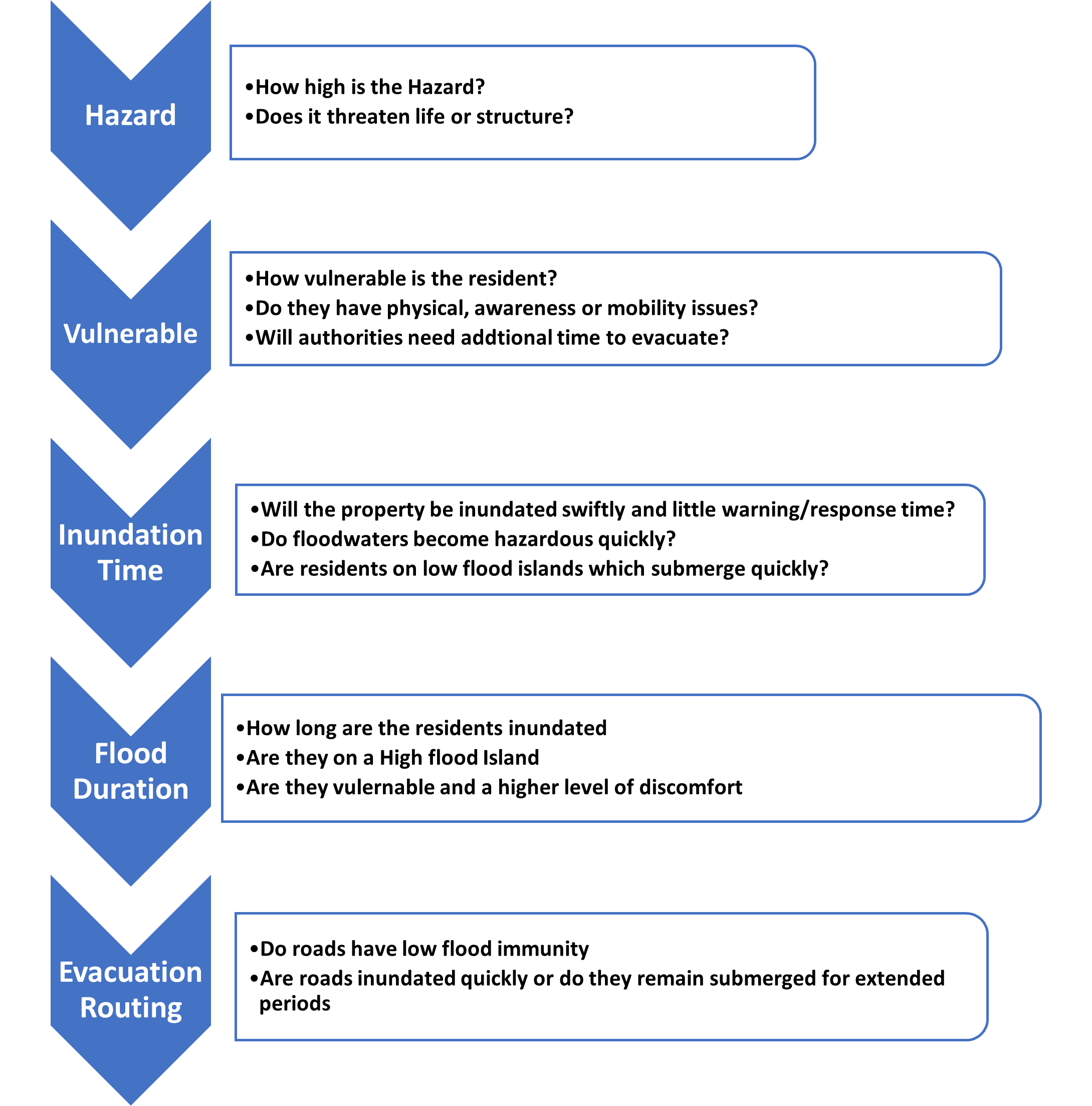Evacuation and Shelter in Place Assessment
Category : Emergency Management , Floodplain Management
Anybody who has been involved in an actual flood event will recognize that one of the issues in responding to these floods is the shear scale, complexity and lack of resources available.
Currently, understanding evacuation and sheltering in place is very difficult, perhaps until now. Traditional assessments are based on the fact that when someone is flooded, there is an expectation to cater for evacuation. But more often than not, trying to do that results in fatalities and has been proven to be far more dangerous in some circumstances.
So, what do we do? We can’t evacuate everyone, its simply not possible for a variety of reasons. So, we need to understand flood risk intimately prior to and during an event. Rather than throwing a wide berth of a flood line and each property that line touches must be tendered to, we need to understand who can remain safely (with some level of discomfort for a short time) and who is at real risk of perishing. In large scale flood events, authorities simply cannot get to everyone.
So the potential way to do this is by taking a triage style approach to managing flood risk. Manage those that have fast inundation times, high hazard, potentially trapped on low flood islands and who are vulnerable. They absolutely need to be evacuated as a priority. Outside of those at risk of perishing, we are leaving those in discomfort to shelter in place – we also can’t forget that those people may be vulnerable and inundated for very long periods of time or trapped on high islands without supply as an example.

An approach such as this can help authorities priortise limited resources into the areas needed. Couple with advanced flood impact based intelligence and forecasting systems, this can also provide innovative ways to undertake a risk based approach to managing flooding.
This is an evolving space in floodplain and emergency management, and as the tools, techniques and technology improve, we can get better at managing our flood risk with multiple tools.
